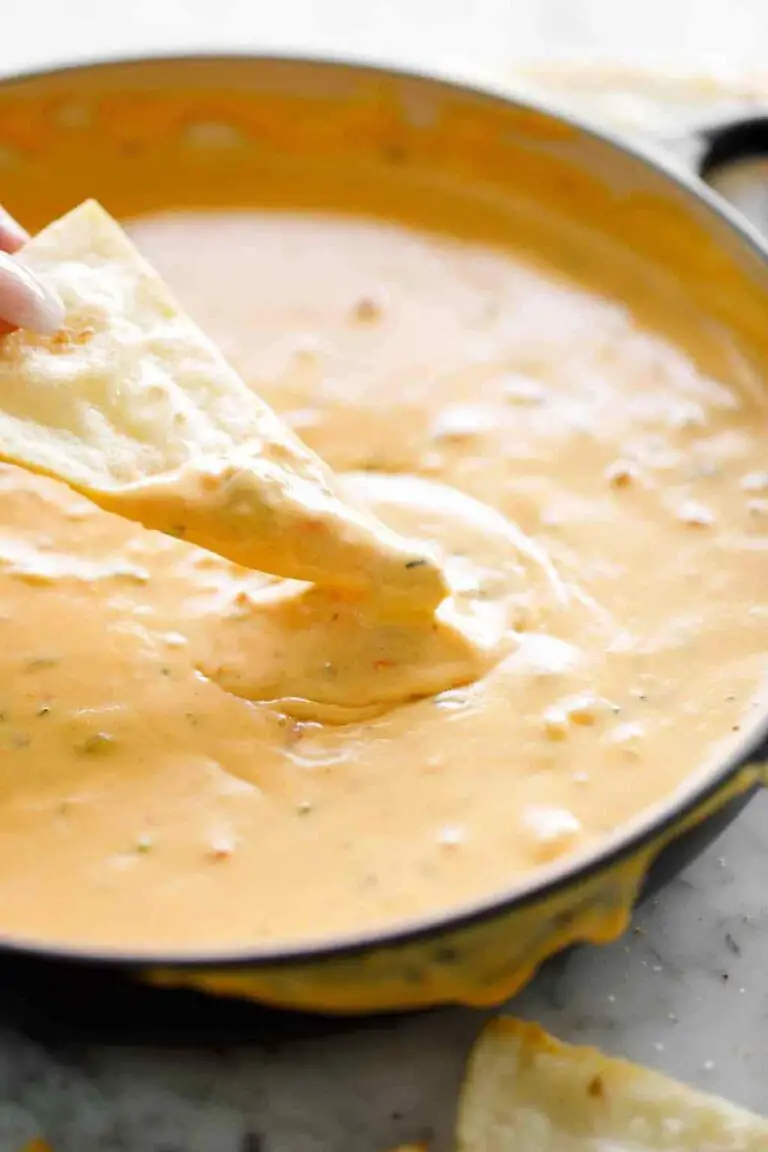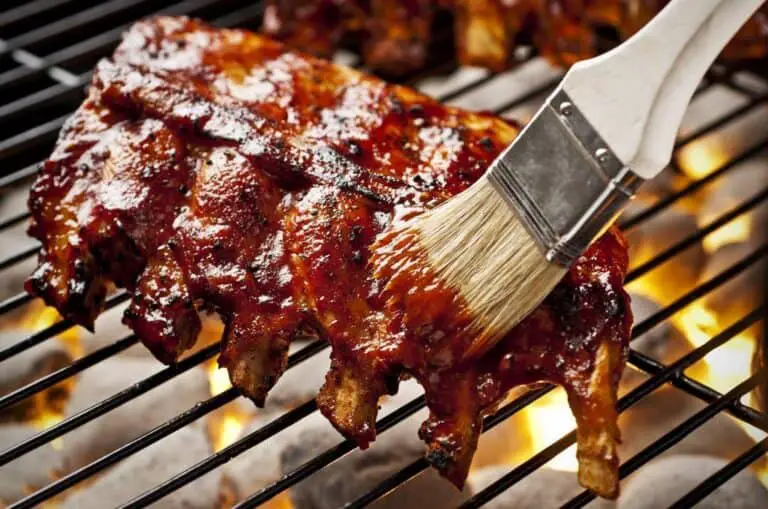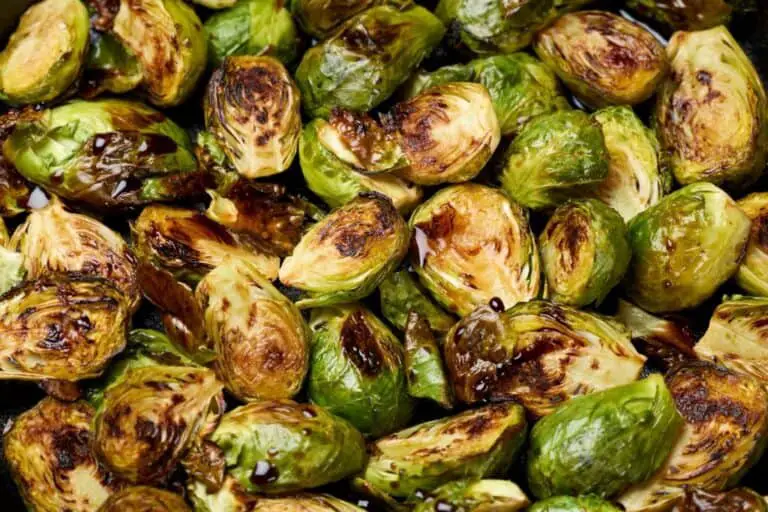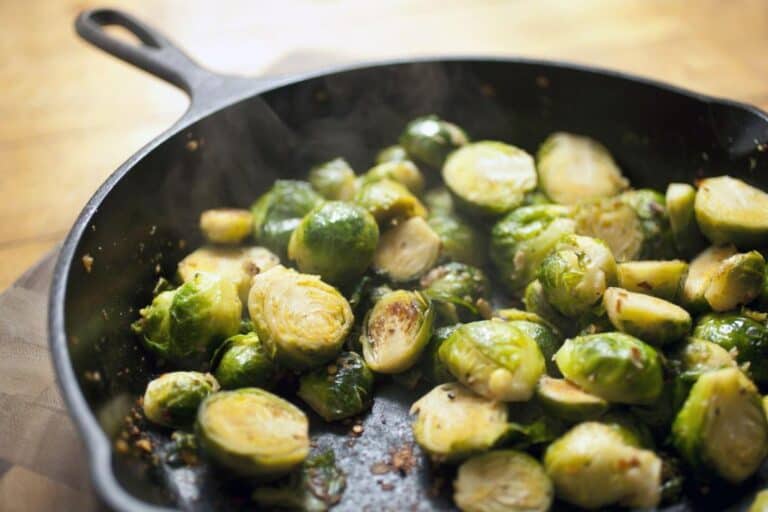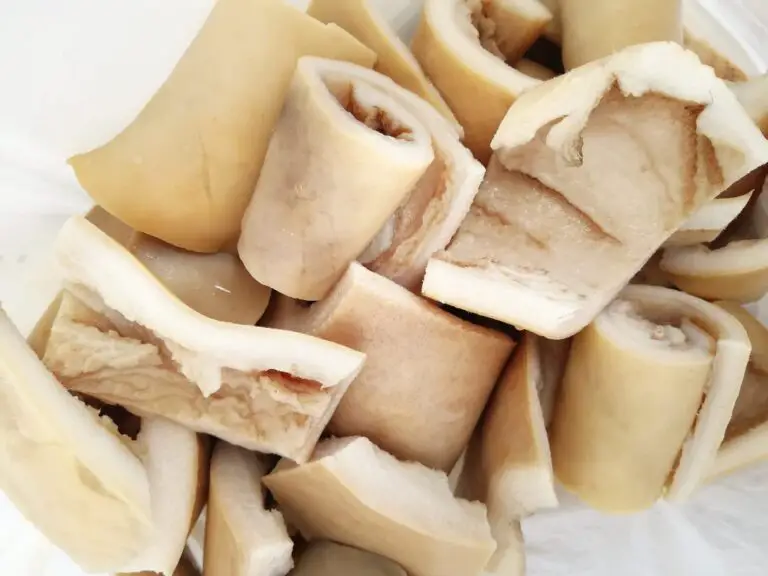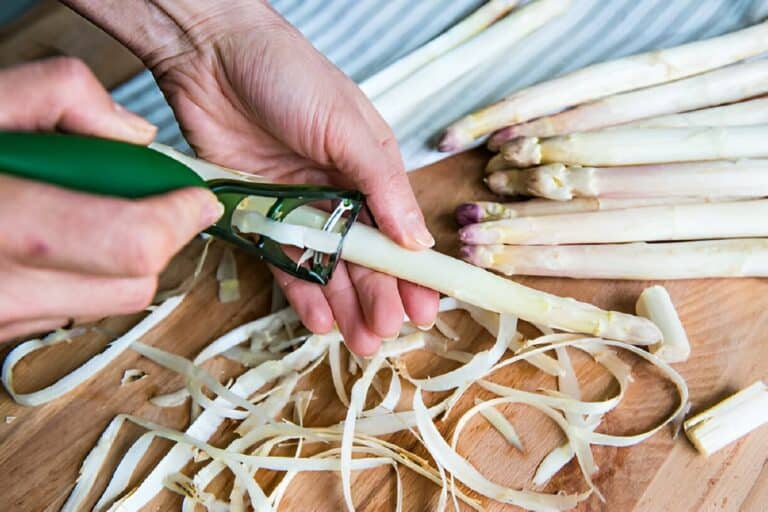Does Butternut Squash Need to Be Peeled before Cooking?
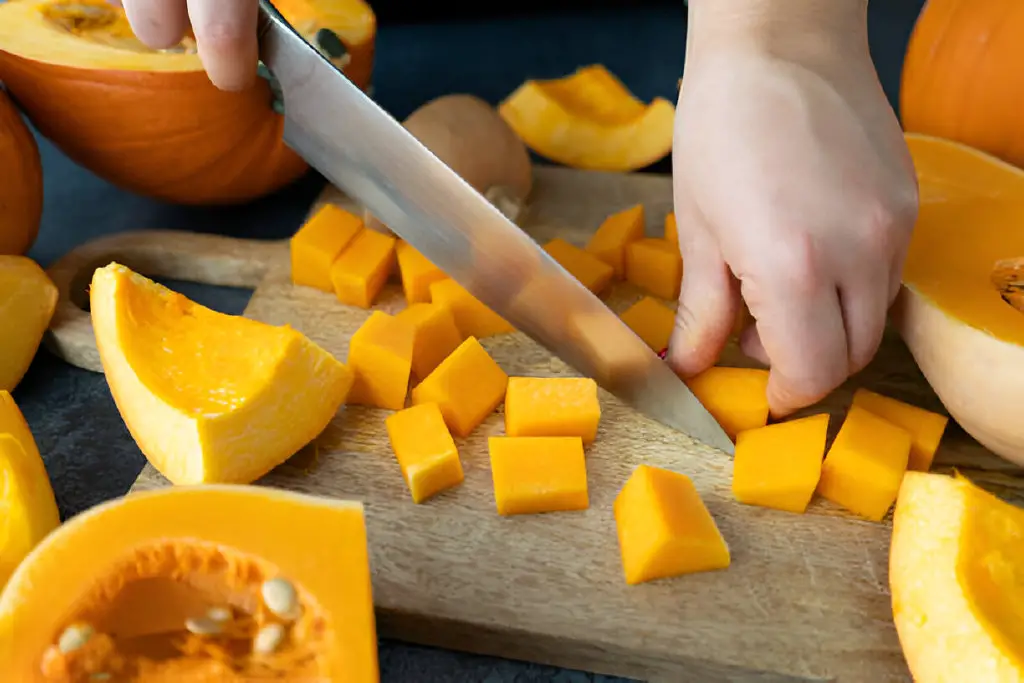
When I first met butternut squash, it was love at first sight. This vibrant orange veggie, with its sweet, nutty flavor, won me over quickly. However, my infatuation took a detour when I faced the age-old question: to peel or not to peel?
A frequent question that arises when preparing butternut squash is whether or not to peel it before cooking. The skin of this squash is quite tough, leading many to wonder if peeling it is necessary for the best results.
Some cooks argue for removing the skin for a smoother texture in soups and purées. Others suggest keeping it to add nutrients and a rustic touch. Deciding whether to peel or not often depends on the specific dish and personal preference.
Let me take you through my journey and share what I’ve learned about preparing this delightful squash.
Butternut Squash as a Popular and Nutritious Vegetable
Butternut squash stands out as a popular choice in many kitchens, celebrated for its vibrant color and sweet, nutty flavor. This versatile vegetable is a tasty treat. It’s also a nutritional powerhouse, rich in vitamins A and C, potassium, and fiber.
It can enhance a variety of dishes, from hearty soups to roasted vegetable medleys, making it a staple in both everyday meals and festive feasts.
Nutritional Benefits of Butternut Squash Skin
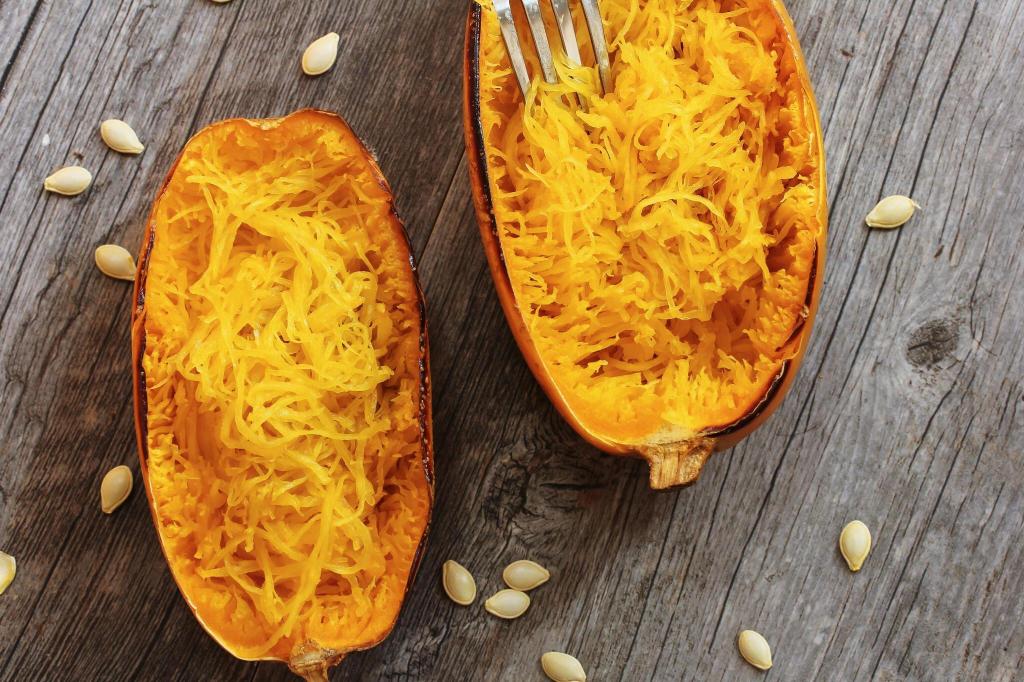
The skin of butternut squash offers notable nutritional benefits that might surprise you. Firstly, it contains fiber, which is essential for good digestion. This fiber helps regulate bowel movements and can prevent constipation. It makes your meals tastier and healthier.
Moreover, butternut squash skin is rich in antioxidants. These compounds help fight free radicals in the body. They can reduce inflammation and lower the risk of chronic diseases. By including the skin in your dishes, you’re giving your body an extra dose of these protective nutrients.
Lastly, keeping the skin on can also make your meal lighter in calories. The skin adds bulk to your dish without many calories. This helps those watching their weight. When preparing butternut squash, consider leaving the skin on. It will improve your meal’s nutrition and healthiness.
The Case for Peeling Butternut Squash Before Cooking
Peeling butternut squash is like unwrapping a gift—the real treat lies underneath. But that outer shell? It’s tough and not always what you want on your plate.
When to Peel:
- Purees and Soups: If you’re making a silky butternut squash soup or puree, peeling is a must. The skin, while edible, has a fibrous texture that can mess with the smoothness of your final dish.
- Roasting Cubes: When I’m roasting butternut squash cubes, I always peel. The skin can become chewy when roasted, which isn’t the texture I’m going for. I prefer each bite to be tender and flavorful, without any tough bits.
- Mashed Squash: For those buttery mashed squash recipes, peeling is non-negotiable. You want every spoonful to melt in your mouth, and the skin just doesn’t allow for that.
Pros of Peeling:
- Smooth texture for soups and purees
- Even roasting without tough skin
- A more consistent flavor throughout
Cons of Peeling:
- Time-consuming
- Can be tricky with larger squash
- You lose the skin’s nutrients.
The Case for Not Peeling Butternut Squash Before Cooking
On the flip side, sometimes it’s okay to let things be. Not peeling butternut squash is like going with the flow—easier, quicker, and sometimes, just as satisfying.
When to Skip Peeling:
- Roasting Halves: If you’re roasting butternut squash halves or wedges, leave the skin on. The skin softens during cooking and helps the squash hold its shape. Plus, it adds a rustic look to your dish that I find quite appealing.
- Stews and Casseroles: In hearty dishes like stews or casseroles, I sometimes leave the skin on. Butternut squash softens and blends in with the rest of the ingredients, adding a bit of texture without overwhelming the dish.
- Grilled Squash: When grilling, the skin can actually protect the flesh from drying out. Plus, it chars nicely, adding a smoky flavor to the squash.
Pros of Not Peeling:
- Saves time and effort
- Skin adds texture and flavor
- Retains more nutrients
Cons of Not Peeling:
- Skin can be tough and chewy
- May not work for all dishes
- Can affect the texture of purees and soups
Peeling Butternut Squash Techniques That Work
If you’ve decided to peel your butternut squash, let’s make it as painless as possible. I’ve tried a few methods, and here’s what works best:
- Microwave Method: Pop the whole squash in the microwave for 2-3 minutes. It softens the skin just enough to make peeling easier. Just make sure to poke a few holes in it first, or you might have a mess on your hands.
- Peeler and Knife Combo: Use a sharp vegetable peeler to remove the skin. Start from the top and work your way down in long, even strokes. Once peeled, slice off the ends, cut the squash in half, and scoop out the seeds. A sharp knife makes this process much easier.
- Boiling: If you’re boiling the squash for a recipe, you can peel it afterward. Boil the whole squash for about 10 minutes, then remove and let it cool slightly. The skin should peel off easily.
Peeling Tools:
| Tool | Pros | Cons |
| Microwave | Softens skin quickly | Requires microwave |
| Vegetable Peeler | Precise and easy to use | Time-consuming for large squash |
| Boiling | Simplifies peeling | Requires post-boil cooling |
Recipe Scenarios: To Peel or Not to Peel?
Let’s break it down with some real-life scenarios. Here’s when I peel, and when I let it slide:
1. Butternut Squash Soup
- Peel: Yes
- Why: You want a smooth, creamy texture, and the skin doesn’t blend well. Peeling ensures no fibrous bits make it into your soup.
2. Roasted Butternut Squash Wedges
- Peel: No
- Why: The skin softens and caramelizes, adding flavor and structure. It’s a great way to keep the squash from falling apart.
3. Butternut Squash and Chickpea Stew
- Peel: Optional
- Why: In a stew, the skin softens and adds texture. If you’re short on time, skip the peeling; it won’t compromise the dish.
| Dish | Peel? | Reason |
| Butternut Squash Soup | Yes | Ensures a smooth, creamy texture |
| Roasted Butternut Squash Wedges | No | Skin caramelizes and adds flavor |
| Butternut Squash Stew | Optional | Skin softens and adds texture |
Recipes to Try
Here are a few of my favorite recipes where peeling—or not peeling—can make a difference:
Creamy Butternut Squash Soup
Peel the squash for a smooth, velvety soup that’s perfect for chilly evenings.
Roasted Butternut Squash Cubes
Keep the skin on to add a touch of rustic charm and texture to your roasted veggies.
Butternut Squash Mash
Peel the squash for a creamy mash that pairs beautifully with a roast or holiday feast.
| Also read: How Long Does Squash Need to Be Cooked? |
Conclusion: The Choice is Yours
At the end of the day, whether you peel butternut squash before cooking comes down to what you’re making and how much time you have. There’s no right or wrong answer—just different paths to delicious results.
Sometimes I peel, sometimes I don’t, and that’s the beauty of cooking—it’s all about personal preference. Next time you’re staring down a butternut squash, armed with your peeler and knife, remember that the choice is yours. Happy cooking!

